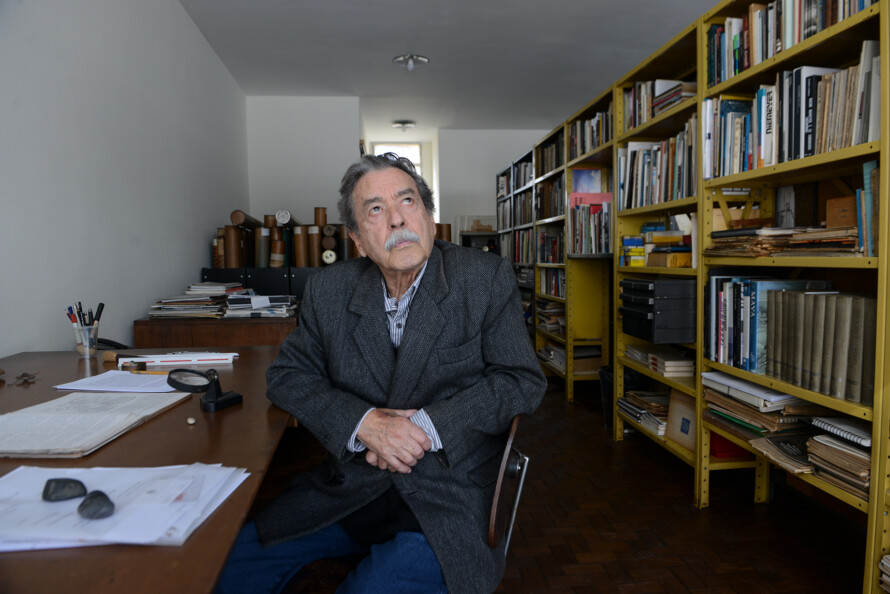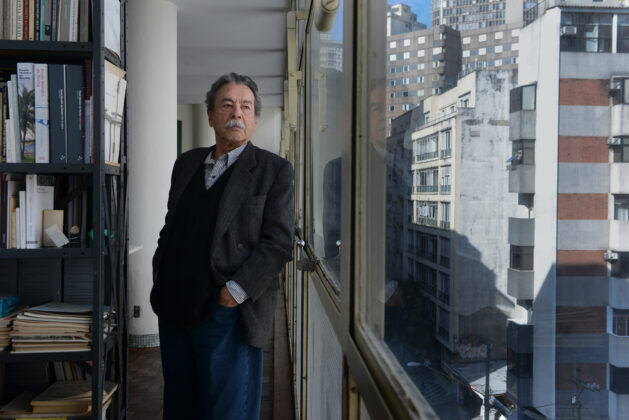On an afternoon in June 2016, a few weeks after winning the Golden Lion at the Venice Biennale, Paulo Mendes da Rocha (1928-2021) received this reporter in his office, in downtown São Paulo, to give an interview to the magazine Brasileiros. It was one of the many international honors received by the Brazilian architect in recent decades – such as the Pritzker, Mies Van der Rohe, the gold medal of the Royal Institute of British Architects (Riba) and the Japanese Imperial Prize – that crowned his nearly 60 years of professional career. The award granted by the Italian event, in fact, was just the pretext for a long conversation on the most varied topics, from the architect’s perceptions about cities, art and nature to criticisms of the construction of Brasília, to the concept of “popular housing” or “green architecture” and to the educational system in Brazil. Paulo Mendes da Rocha made no concessions, he was forceful in his statements.
Over an hour and a half of interview, the architect made it clear, once again, that architecture cannot be thought of as something separated from everyday life, from solving people’s problems and from the pursuit of satisfying human needs and desires. The title of the article, published in that month’s edition of Brasileiros – “The broad sense of architecture” – and the headline on the cover – “Paulo Mendes da Rocha: a thinker” – tried, minimally, to account for this breadth of thought by the architect who , at that time, was the last great name alive in Brazilian modern architecture.
Now, five years later, shortly after the death of Paulo Mendes da Rocha, aged 92, as a result of lung cancer, arte!brasileiros recalls some of the most striking parts of that conversation. The architect, born in Vitória and based in São Paulo, was one of the main names of the so-called Escola Paulista de Arquitetura – along with his master João Vilanova Artigas. He designed, among many others, the Gymnasium of the Paulistano club, the MuBE (Brazilian Museum of Sculpture and Ecology), the renovation of the Pinacoteca do Estado, the Marquise in Praça do Patriarca, the Coach Museum (Lisbon) and the Sesc 24 de Maio . He was a professor at FAU-USP, persecuted by the civil-military dictatorship at the end of the 1960s, and he had a marked influence on the architectural thinking of the generations that followed him. With an emphasis on the construction technique, the adoption of exposed reinforced concrete and the enhancement of the structures of houses and buildings, his works are an unavoidable reference in Brazilian architecture.
But, in addition to his works, it was his ideas and positions that made him one of the biggest names in national architecture – as happened with Lúcio Costa, Oscar Niemeyer, Artigas and Lina Bo Bardi, among others. Read excerpts from the 2016 interview below.
About architecture and art
“We are here, in any of our activities, to solve problems. There are always problems, as it is very difficult to be any living being in nature. You see what species had to invent, from a dragonfly to a giraffe, the business is very complicated. Viewed in this way, things get to some extent exciting, because we have to solve problems. Or, for this to happen, we need to know how to formulate our problems”.
“You can’t solve problems, architecturally, from a purely functional point of view. Then you create machines at most. Precisely the grace of architecture is to keep the speech alive that, given the urgency to do something, it is already done with high ideals of the vision we have of ourselves. This is what linguists call the concomitance of the emergence of needs and desires. You turn strict need into desire at the same time. In other words, you solve a problem from a practical, almost mechanical point of view, giving an expression that it can still be better solved in the future”.
“Nowadays, I see the expression art as somewhat reductionist. It can’t be just art, and here’s the fun of architecture, which you don’t really know if it’s art, science or technique. In other words, it has to be all of this at the same time. It is a discourse about knowledge. The impression I have is that everything man does has an artistic dimension. Our existence requires a position of what we call art, or artistic attitude. In speech, gesture, expression, concern for the other… Deep down, art means concern for the other”.
“There is a market of so-called architecture, gaudy, frightening, which, like any packaging, the market produces, with a fictitious value, capable of being enacted as a value. Architecture as a commodity is a mistake. Architecture is not merchandise, it is always the result of needs”.
“I think it’s very nice to use this popular expression “to architect”. People say: what are you designing? And that is: to be giving shape to an idea, a will, a desire. We are doomed to transform an idea into a thing, because otherwise nobody knows your idea. If you write lyrics on paper, here’s the poem turned into a thing. When it was just in the poet’s head, it was nothing”.

About cities and public space
“In fact, the idea of a city is not one of physical support, in the sense of protecting it from the wind and rain. It’s a place where you can talk. The city is man’s laboratory. He needs to be together. And to live together, you need public transport, children’s schools, etc. This does not mean that the city of São Paulo, with 20 million inhabitants, the result of the decadence arising from a colonialist policy, is the ideal city”.
“In these moments of crisis, when the acuteness of the problems becomes explicit, the city transforms itself to say exactly what it intends to be. When spaces are occupied, when the street takes on the character of an assembly, it is also an architectural vision of transformation. Because architecture doesn’t always require building something. It can be carried out with human attitudes simply”.
About man and nature
“Because there is this tendency to think that talking about nature is talking about green. No, nature is even the male and female condition of human beings, and this has never been faced with such evidence as when faced with the issue of the impossibility of an overpopulation on the planet. We are nothing. We always have to imagine what we will be. And when you ask that, here’s the political dimension of our existence. What will we be if we can make decisions about our directions? It’s avoiding disaster. In the end, this is it”.
“You have to face the fact that the planet is a helpless little pebble spinning in the universe, and for the first time man cannot deny it.”
About education and training
“The educational system is all wrong. We should teach physics, elementary mechanics along with literacy. A child plays with a pawn in the palm of his hand, flies a kite, sets off a rocket, plays marbles. In other words, he knows what is a sphere that only touches a surface at one point. You don’t play marbles with parallelepipeds, but with perfect spheres. And you tie a stone to a string and any child will understand what the force of gravity, conservation of energy, etc. are. It is easier to teach elementary physics and mechanics to a child than to teach Mother’s Day. The difficult thing, for a child, is to understand the nonsense they are talking about. And then I’m talking about the whole world, not just Brazil. Education today is made to subject the comrade to the enjoyment of the market and the ideology that is placed there, of a stupid capitalism”.
“It is easier for a child to understand what a heart is if you put him to feel the pulse with his hand, in his own body, than to have him draw a red thing on paper, so abstract. The fisherman’s son knows everything about wind, weather, etc. The confrontation with nature in its set of phenomena educates, even today, in a way that serves a bit of counterpoint to this official education we have”.
“I don’t have much experience, for me the world is always new. I don’t know what was and what will be. All I know is that I’m not afraid of things, much less the present, because it’s all we have.”
Leia em português, clique aqui.













